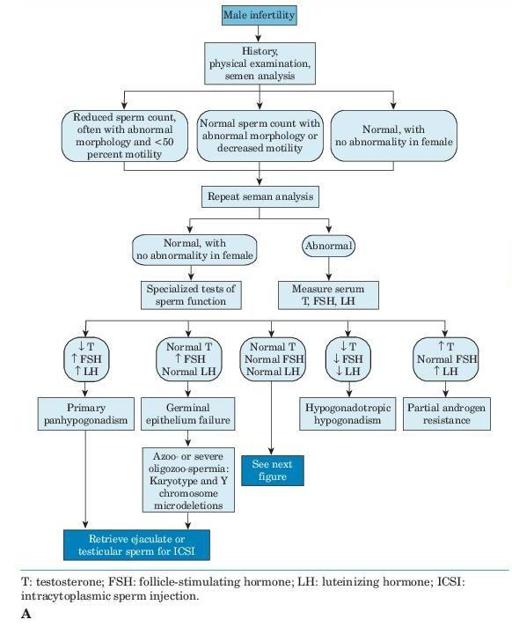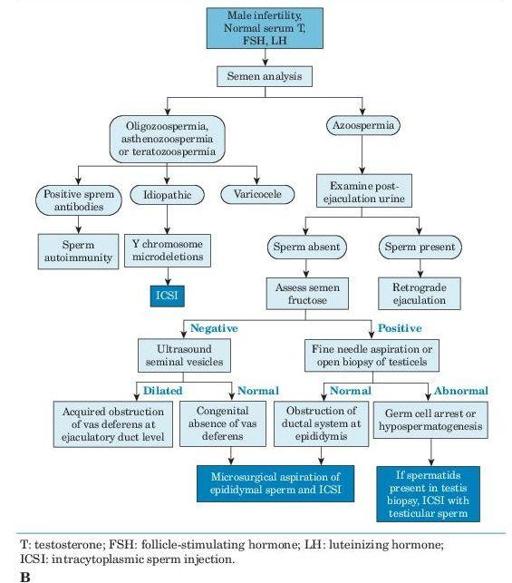Wallach's Interpretation of Diagnostic Tests: Pathways to Arriving at a Clinical Diagnosis (255 page)
Authors: Mary A. Williamson Mt(ascp) Phd,L. Michael Snyder Md

BOOK: Wallach's Interpretation of Diagnostic Tests: Pathways to Arriving at a Clinical Diagnosis
8.41Mb size Format: txt, pdf, ePub
Posttesticular defects (disorders of sperm transport) (10–20%)
Secondary hypogonadism (1–2%)
Idiopathic (normal semen analysis, no other apparent cause) (40–50%)
Female factors of infertility can also be divided into four general categories, of which the first category and hyperprolactinemia are amenable to laboratory diagnosis:
Ovulatory disorders (25%)
Tubal blockages or abnormalities (22%)
Endometriosis (15%)
Pelvic adhesions, hyperprolactinemia, and idiopathic (38%)
Approach to diagnosis of male infertility

Approach to diagnosis of male infertility in patients with normal serum hormone concentrations

Figure 7–2
(From Swerdloff RS, Wang C. Evaluation of male infertility. In: Basow DS, ed. UpToDate. Waltham, MA: UpToDate, 2013.)
Suggested Readings
Hull MG, Glazner CM, Kelly NJ, et al. Population study of causes, treatment and outcome of infertility.
Br Med J.
1985;91:1693–1697.
Swerdloff RS, Wang C. Evaluation of male infertility. In: Basow DS ed.
UpToDate
, Waltham, MA: UpToDate Inc., 2013.
TESTICULAR DISEASE
Definition
Testicular disease refers to primary testicular defects, including congenital and developmental disorders and acquired diseases. Testicular disease accounts for 30–40% of all causes of male infertility.
Who Should Be Suspected?
Other books
Earthquake Weather by Tim Powers
Hervey 11 - On His Majesty's Service by Allan Mallinson
Castaway Dreams by Darlene Marshall
Do You Want to Know a Secret? by Claudia Carroll
A Taste of Tragedy by Kim McMahill
Getting Even by Sarah Rayner
A Wizard for Christmas by Dorothy McFalls
Business or Pleasure? by Julie Hogan
Anno Dracula Dracula Cha Cha Cha by Kim Newman